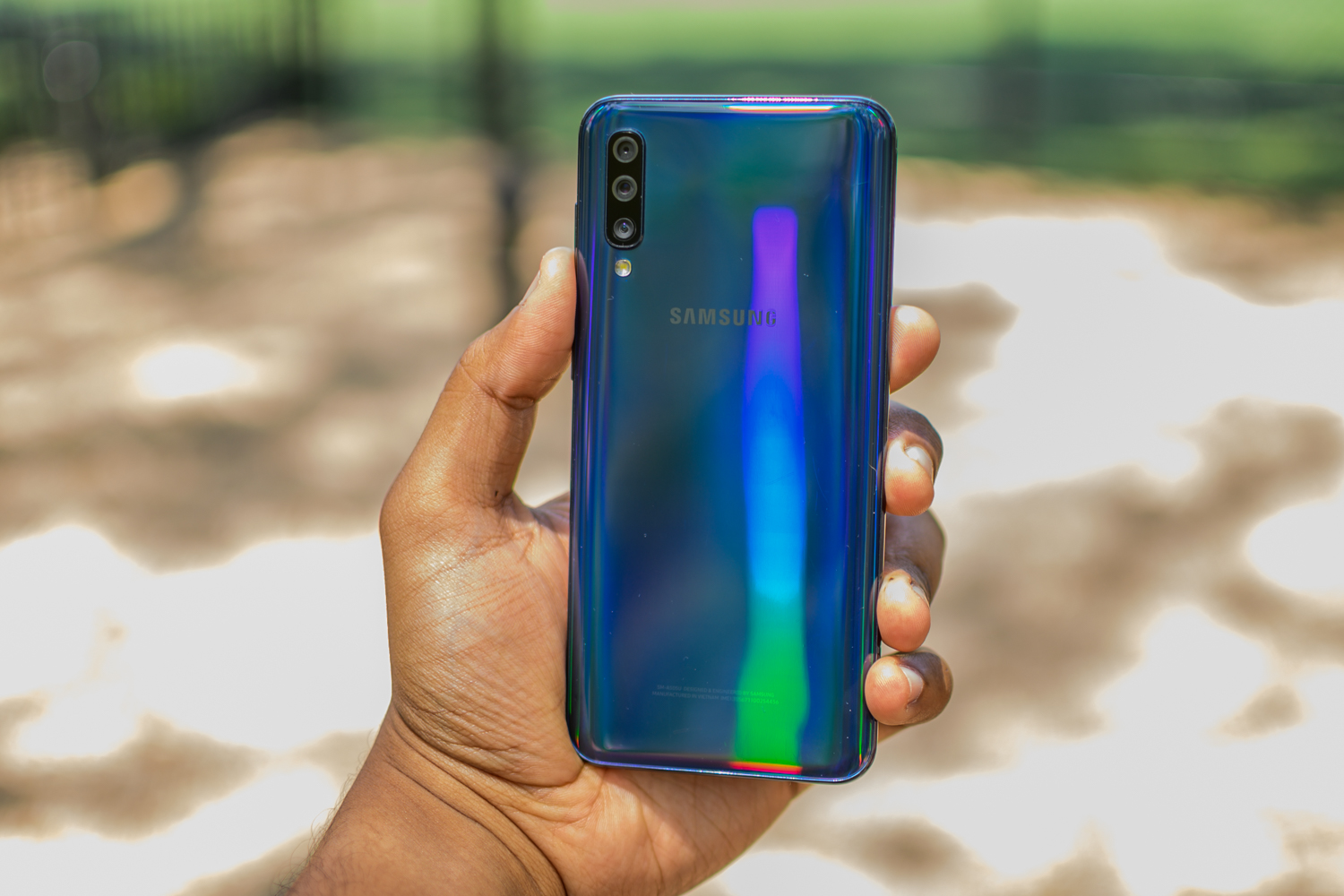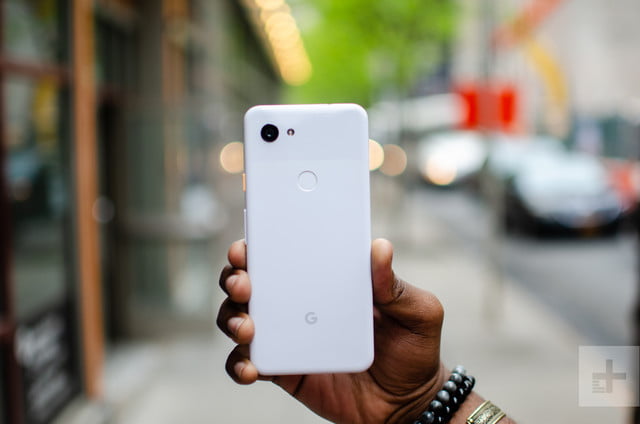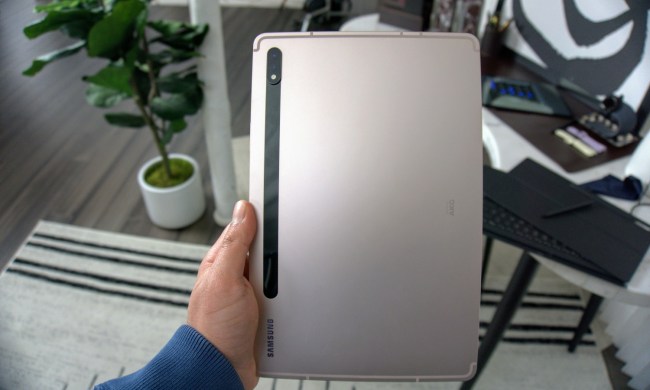While they may not have a flagship phone’s flashy style, midrange phones often offer excellent performance at a reasonable price. The Samsung Galaxy A50 is a great example of such a phone, offering a flagship-style bezel-less display, solid specs, and a versatile triple-lens camera suite. At just $350, it’s tough to argue against this phone, and you might assume — not unreasonably — that such a phone would be the toast of the midrange market.
But the market is a large place, and here be midrange monsters. The Google Pixel 3a is probably the midrange king, and at $400, it’s strong competition for the Samsung phone. Which device comes out on top when the Samsung Galaxy A50 and Google Pixel 3a go head-to-head? We found out.
Specs
| Google Pixel 3a |
Samsung Galaxy A50 | |
| Size | 151.3 x 70.1 x 8.2 mm (6.0 x 2.8 x 0.3 inches) | 158.5 x 74.7 x 7.7 mm (6.24 x 2.94 x 0.30 inches) |
| Weight | 147 grams (5.19 ounces) | 166 grams (5.86 ounces) |
| Screen size | 5.6-inch OLED | 6.4-inch AMOLED |
| Screen resolution | 2,220 x 1,080 pixels (441 pixels per inch) | 2,340 × 1,080 pixels (403 pixels per inch) |
| Operating system | Android 10 | Android 9.0 Pie (under One UI) |
| Storage space | 64GB | 64GB, 128GB |
| MicroSD card slot | No | Yes, up to 1TB |
| Tap-to-pay services | Google Pay | Google Pay, Samsung Pay |
| Processor | Qualcomm Snapdragon 670 | Samsung Exynos 9610 |
| RAM | 4GB | 4GB, 6GB |
| Camera | Single 12.2MP rear, 8MP front camera | Triple 25MP, 8MP, and 5MP rear, 25MP front |
| Video | 2160p at 30 frames per second, 1080p at 120 fps, 720p at 240 fps | 1080p at 30fps |
| Bluetooth version | Bluetooth 5.0 | Bluetooth 5.0 |
| Ports | USB-C, headphone jack | USB-C, headphone jack |
| Fingerprint sensor | Yes (rear-mounted) | Yes (in-display) |
| Water resistance | Splash resistant | None |
| Battery | 3,000mAh
18W fast charging |
4,000mAh
15W fast charging |
| App marketplace | Google Play Store | Google Play Store |
| Network support | AT&T, T-Mobile, Sprint, Verizon | AT&T, T-Mobile, Sprint, Verizon |
| Colors | Just Black, Clearly White, Purple-ish | Black, White, Blue, Coral |
| Price | $400 | $350 |
| Buy from | Samsung | |
| Review score | 4.5 out of 5 stars | 4 out of 5 stars |
Performance, battery life, and charging
The Samsung Galaxy A50 is equipped with Samsung’s own Exynos 9610. It’s a solid processor, and it handled extended sessions of PUBG Mobile with only a few dropped frames. However, the Pixel 3a’s Snapdragon 670 provides smoother performance overall, without any of the hitches we occasionally saw on the A50. Both phones start at 64GB of internal storage, but the A50 has a 128GB variant and support for a MicroSD card, giving it an edge where media-hungry users are concerned.
You’ll get a strong day’s worth of use out of the Pixel 3a’s 3,000mAh battery, but the A50’s massive 4,000mAh battery is the stronger here. Use it lightly and the A50 will last you into two days. You won’t need to let it rest for a long time either, thanks to some speedy 15W USB-C recharging. The Pixel’s 18W charging is a little faster, but not by much. Neither has wireless charging capabilities.
It’s a close-run contest. The Pixel is the smoother performer, but the A50 really shows what a big battery can do. It’s a tie for us.
Winner: Tie
Design and durability
These two phones represent two rather different ideals. The Galaxy A50 emulates a sleek flagship with slim bezels, while the Pixel 3a is a far more modest affair, with chunkier bezels. The A50 is made from plastic but tries hard to pretend it isn’t. It mostly does a good job of looking like glass, and the rainbow effect is nice, but it does feel cheap. That’s something you’ll have to deal with on the Pixel as well, but thanks to the frosted polycarbonate, the 3a doesn’t attract as many fingerprints and stays looking better for longer.
Since both phones are made from plastic, durability is less of a concern than with glass phones. If you want them to stay scratch and chip-free though, you should probably buy a case. There’s no water-resistance on either phone though, so be careful around the pool.
With durability being a tie, it all comes down to design. The Galaxy A50 is undoubtedly the more modern of the two, but we still prefer the Pixel 3a. The polycarbonate is less likely to be scratched and attracts fewer fingerprints, and while the bezels are larger, there’s no notch for notch-haters. We’re giving this to the Pixel 3a.
Winner: Google Pixel 3a
Display

It’s a nice surprise to see OLED panels on both of these midrange phones, and they’re both great looking displays. The Pixel 3a’s 5.6-inch glass OLED display runs a 2,220 x 1,080 resolution, and that results in a crisp measurement of 441 pixels-per-inch (ppi). As it’s an OLED, it outputs excellent black levels, and beautiful colors to boot. The A50’s 6.4-inch AMOLED display runs a 2,340 × 1,080 resolution, and that larger size means it’s not as sharp as the Pixel — but the bezel-less design means content feels more immersive on the A50. The Pixel has a slightly higher contrast ratio, but we think the A50’s larger screen deserves the win here.
Winner: Samsung Galaxy A50
Camera

The Samsung Galaxy A50 is armed with three lenses in the rear camera module. There’s a 25-megapixel main lens, paired with an 8-megapixel wide-angle lens, and a 5-megapixel depth sensor. There’s also a 25-megapixel selfie lens around the front. On paper, this seems like a mismatch, with the Google Pixel 3a’s single 12.2-megapixel rear lens and front-facing 8-megapixel lens looking grossly outmatched.
But that’s really not the case. While the Galaxy A50 takes some excellent shots, the Pixel 3a tends to create better overall pictures. Samsung’s HDR and bokeh background blur can be a little aggressive, and the A50 struggles with low light. The Pixel 3a handles low light situations better than some flagship phones, and that’s even without Google’s incredible Night Sight mode. With the same software you’ll find on the incredible Pixel 4, the Pixel 3a is the winner here.
Winner: Google Pixel 3a
Software and updates

It’s Android all around here — but even though the two phones share a platform, there are some big differences between them. The Pixel 3a runs the Pixel-only version of Android that’s close to stock Android with a few extras. The Galaxy A50 also runs Android, but it’s hidden under Samsung’s custom One UI skin. It’s more customizable than the Pixel’s Android, but also has its own downsides — there’s a lot of bloatware, and it’s still stuck with Android 9.0 Pie, while the Pixel runs the latest Android 10.
That difference highlights one of the Galaxy A50’s biggest flaws — update speed. Samsung has never been the fastest at updating its phones, and the A50 is no exception. While we have no doubt Android 10 will arrive eventually, it won’t be before 2020 is well settled. By contrast, the Pixel 3a already has Android 10 and will get subsequent updates close to the day of release. Google’s update game is far too strong for Samsung, and it wins the Pixel this round.
Winner: Google Pixel 3a
Special features

The Pixel’s Android build may be less busy, but there are still plenty of special features to be found. Most are based around Google’s incredible A.I. which enables things like the Now Playing feature that identifies songs playing near you, the spam call filtering Call Screen, and the useful AR mode for Google Maps. You also get close integration with Google Assistant, and you can squeeze the edges of your phone to activate it.
While it comes with all the usual Android features, the Galaxy A50 doesn’t come with many of the special features you’d get on one of Samsung’s flagships, so the Pixel 3a has a serious advantage in this round. The in-display fingerprint scanner claws back some points, but it’s slow and not particularly reliable. It’s pretty clear the Google phone has a significant edge here.
Winner: Google Pixel 3a
Price and availability
The Samsung Galaxy A50 is currently available for $350 from Verizon, Sprint, and Xfinity Mobile. If you’d rather get it unlocked, Best Buy, Amazon, and Samsung.com are the places to go.
The Google Pixel 3a is also available now at $400. It’s available from T-Mobile, Sprint, U.S. Cellular, and Verizon. It’ll work on AT&T’s networks, but the carrier isn’t selling the phone itself. You can also buy it unlocked from the Google Store.
Overall winner: Google Pixel 3a
There’s a lot to recommend the Samsung Galaxy A50. It’s a great looking phone, with a beautiful AMOLED display, and an extremely versatile camera, and it’s a great price at $350. However, we think it’s worth paying $50 more to get the Google Pixel 3a. Google’s phone may not have the bezel-less screen of the A50, but the camera is incredible, performance is snappy, and updates are extremely fast.
None of this is to say the Galaxy A50 is a bad phone. On the contrary, it’s a good midrange phone that represents excellent value for money. It’s simply that Google’s Pixel 3a is that much better. Unless you’re a die-hard Samsung fan, want a MicroSD card, or a slightly larger battery, the Pixel 3a is worth the extra $50.




